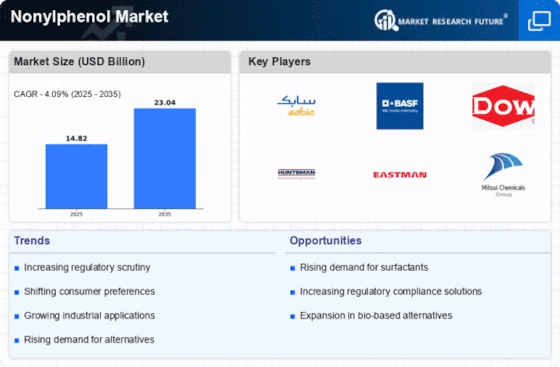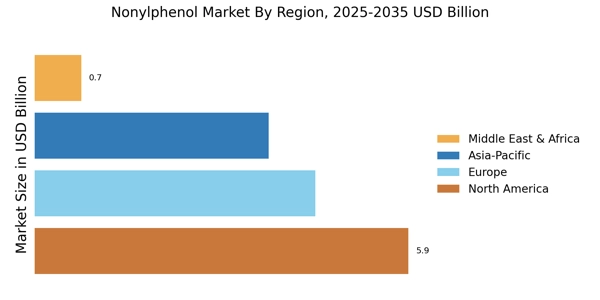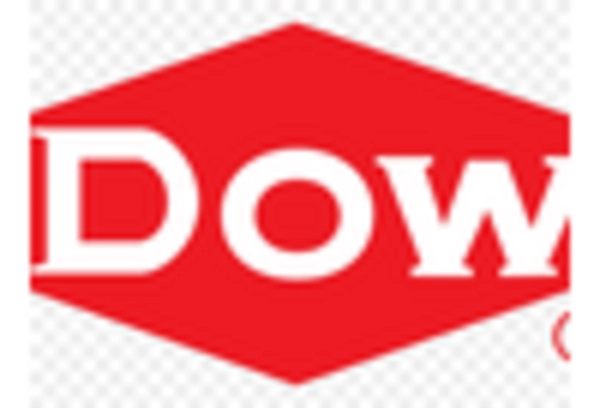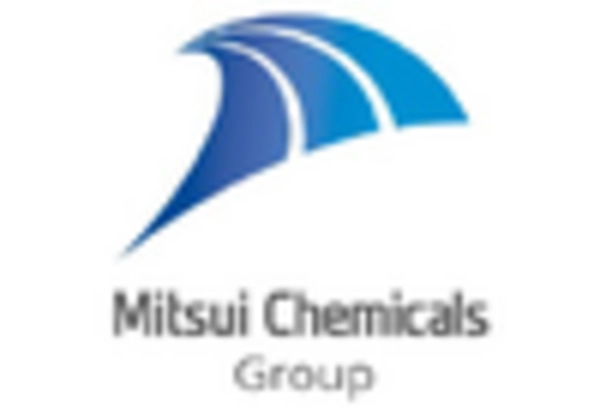Rising Demand in Surfactants
The Nonylphenol Market is experiencing a notable increase in demand for surfactants, which are essential in various applications such as detergents, emulsifiers, and wetting agents. This surge is attributed to the growing consumer preference for effective cleaning products and the expansion of the personal care sector. In 2025, the surfactant segment is projected to account for a substantial share of the Nonylphenol Market, driven by the need for high-performance formulations. Furthermore, the increasing use of nonylphenol ethoxylates in industrial applications is likely to bolster market growth, as these compounds exhibit superior properties compared to traditional surfactants. As industries continue to innovate and develop new formulations, the demand for nonylphenol-based surfactants is expected to remain robust.
Expansion in End-Use Industries
The Nonylphenol Market is significantly influenced by the expansion of end-use industries such as automotive, construction, and textiles. These sectors utilize nonylphenol derivatives for their excellent chemical properties, which enhance product performance. For instance, in the automotive industry, nonylphenol is employed in the production of coatings and adhesives, contributing to durability and resistance to environmental factors. The construction sector also relies on nonylphenol-based products for sealants and paints, which are essential for infrastructure development. As these industries continue to grow, the demand for nonylphenol is anticipated to rise, thereby driving the overall market. In 2025, the construction and automotive sectors are expected to be key contributors to the Nonylphenol Market, reflecting a trend towards increased industrial activity.
Growing Awareness of Chemical Properties
The Nonylphenol Market is witnessing a growing awareness of the unique chemical properties of nonylphenol and its derivatives. These compounds are recognized for their effectiveness in enhancing product performance across various applications, including agriculture, textiles, and personal care. The increasing understanding of nonylphenol's multifunctional capabilities is likely to drive its adoption in new markets. For example, in agriculture, nonylphenol is utilized as a surfactant in pesticide formulations, improving efficacy and application. As industries become more informed about the benefits of nonylphenol, the market is expected to expand, with potential growth in sectors that have not traditionally utilized these compounds. This trend suggests a promising future for the Nonylphenol Market as awareness continues to rise.
Technological Advancements in Production
Technological advancements in the production processes of nonylphenol are playing a crucial role in shaping the Nonylphenol Market. Innovations in manufacturing techniques are leading to more efficient and cost-effective production methods, which may enhance the overall supply chain. For instance, the adoption of greener technologies and catalysts is likely to reduce environmental impact while maintaining product quality. These advancements not only improve yield but also align with the increasing regulatory pressures for sustainable practices. As manufacturers invest in research and development to optimize production, the Nonylphenol Market is expected to benefit from enhanced product availability and competitive pricing, potentially attracting new applications and customers.
Regulatory Compliance and Environmental Concerns
The Nonylphenol Market is currently navigating a complex landscape of regulatory compliance and environmental concerns. Governments and regulatory bodies are increasingly scrutinizing the use of nonylphenol due to its potential environmental impact and toxicity. This scrutiny has led to the implementation of stricter regulations governing the production and use of nonylphenol in various applications. As a result, manufacturers are compelled to adapt their practices to comply with these regulations, which may involve investing in alternative formulations or processes. While this presents challenges, it also opens opportunities for innovation in the Nonylphenol Market, as companies seek to develop safer and more sustainable alternatives that meet regulatory standards.


















Leave a Comment